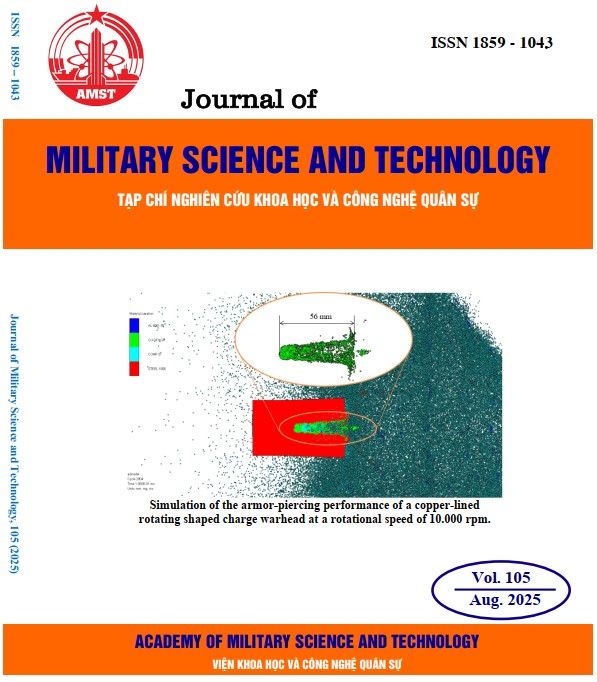Investigation of the effects of heat treatment on the microstructure and mechanical properties of Pb-Sb alloy used in fabrication of anode spines for high-capacity lead-acid batteries
496 viewsDOI:
https://doi.org/10.54939/1859-1043.j.mst.105.2025.60-66Keywords:
Lead-acid battery; Anode spine; Pb-Sb alloy.Abstract
The as-cast Pb-Sb alloy typically exhibits a heterogeneous microstructure and significant residual stress, rendering it susceptible to structural failure under external mechanical loads. This study demonstrates that heat treatment effectively homogenizes the microstructure, eliminates residual stress, and enhances the alloy's suitability for subsequent processing stages in the fabrication of anode electrodes for high-capacity lead-acid batteries. Post-heat treatment, the Pb-Sb alloy achieves an average hardness of 13.4 HV, a tensile strength of 31.67 MPa, and an equiaxed grain structure with an average grain size of 0.0164 mm.
References
[1]. Fawad Tariq, S. Umair Azher, Nausheen Naz, "Failure Analysis of Cast Lead–Antimony Battery Grids," Journal of Failure Analysis and Prevention, (2010). DOI: https://doi.org/10.1007/s11668-010-9331-1
[2]. Bagherian Ehsaan-Reza, Fan Yongchang, Cooper Mervyn, Frame Brian, Abdolvand Amin, "Effect of antimony addition relative to microstructure and mechanical properties of continuous cast lead alloy," 25th Anniversary International Conference on Metallurgy and Materials, Brno, Czech Republic, EU, (2016).
[3]. Anthony W.Worcester, John T. O'Reilly, "Lead and Lead Alloys," ASTM Handbook Volume 2 Properties and Selection: Nonferrous Alloys and Special-Purpose Materials, pp. 1655-1693, (1992).
[4]. C.I. Nwoye, S.I. Okeke, "Effect of melting temperature on the energy absorbance of Pb-Sb-Cu
alloy at fracture resulting from impact load," Journal of Engineering and Applied Sciences 4, pp. 112-117, (2008).
[5]. Esmail Abdo Mohammed Ali, Mohammed Majeed Hameed, Mohammed Gumaan, Abdu Alameri, "Effects of Sb and/or Sn concentrations on the SbSn formation in a ternary melt-spun Pb–Sb–Sn alloy," Results in Materials, Volume 16, (2022). DOI: https://doi.org/10.1016/j.rinma.2022.100307
[6]. Mohamed Basyoni, Yang Jiao & Nageh K. Allam, “A novel machine learning approach for surface roughness quantification and optimization of cast-on-strap lead-antimony alloy via two-point correlation function,” Scientific Reports 13, 13369 (2023). DOI: https://doi.org/10.1038/s41598-023-39619-z







